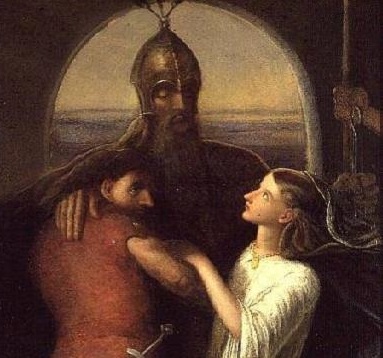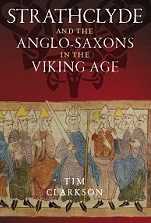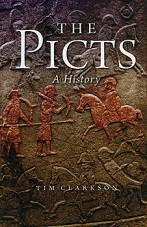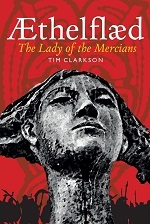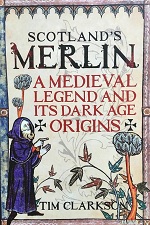
Fairfield shipyard offices
Last month I was delighted to receive a couple of beautifully designed postcards from Govan. They were a gift from Geraldine Greene, an artist involved in a number of Govan-based projects. One card shows the frontage of the former Fairfield Shipyard offices; the other shows a close-up of ornamental stonework on a building at Water Row. The images are screen-printed onto a sturdy material which has a wonderful texture and a kind of antique feel.

Ship’s prow and Zephyrs: ornamental stonework at Water Row.
These cards are limited editions so I feel very honoured by the gift. Geraldine tells me a third card was also produced but got distributed so quickly that there weren’t any left. She did however send me a digital copy (see below). It’s a view of the area known as Govan Cross, with the Aitken Memorial Fountain in front of the new parish church (‘new’ as in ‘built in 1883’).

Govan Cross: Aitken Memorial Fountain and new parish church.
All three cards were produced at The Portal, a community arts venue inhabiting six formerly derelict shops. The Portal is one of a number of projects undertaken by Central Govan Action Plan (CGAP), a key agency in Glasgow City Council’s plans for the regeneration of Govan. CGAP commissioned the three postcards, intending them to highlight the work currently being done to preserve Govan’s rich architectural heritage. One aspect of this work is the Govan Cross Townscape Heritage Initiative whose remit covers the features shown in two of the postcards. The THI is supported by the City Council and the Heritage Lottery Fund, and one of its aims is to ‘bring history to life, offer opportunities to learn about and promote Govan’s rich heritage, and provide training and job opportunities linked to the conservation of traditional buildings and historic environments’.

Screen-printing postcards at The Portal.
An important bedrock of the regeneration process is central Govan’s designation as a Conservation Area, a formal acknowledgement by the City Council that this is ‘an area of special architectural or historic interest, the character or appearance of which it is desirable to preserve or enhance’. Conservation Area status puts Govan in a group with 22 other places around the city that are recognised as having unique heritage features worthy of protection. Raising awareness of this is one of the aims of the postcards, which mention the Conservation Area on the back (see image below).

Reverse of the Water Row postcard
The Govan Conservation Area comprises most of the central part of the town. It extends westward from the edge of the Riverside Housing Estate to the Victorian green space of Elder Park. Three of the four features associated with the early medieval period are included within it: the old parish church (‘Govan Old’) with its stunning collection of sculpture; the line of the processional pathway of the kings of Strathclyde; and the route to the ancient ford at the end of Water Row, leading to the royal residence at Partick on the north bank. The presumed site of the ceremonial mound known as Doomster Hill, now largely hidden beneath the Riverside Estate, lies just outside the Conservation Area but gets a mention in the appraisal document drawn up in support of the designation.
A page on the city council’s website defines a Conservation Area Appraisal (CAA) as ‘a vital tool to enable the active management of the conservation area. It identifies the area’s special features and changing needs through a process which includes researching its historical development, carrying out a detailed townscape analysis and preparing a character assessment.’
The Govan CAA gives a rather neat and useful summary of the town’s richly layered history, starting with the traditional view of its beginnings:
‘The origins of Govan as a settlement are believed to pre-date that of Glasgow, with the formation of a monastery by St Constantine around 564 AD on or near the site of Govan Old Parish Church….’
These words introduce the reader to a period when Govan was the principal royal settlement or ‘capital’ of the kingdom of Strathclyde (c.870-1050 AD). The archaeological excavations undertaken at the old parish church get a quick mention, as do the sculptured stones and the mysterious Doomster Hill. There then follows a tour through later times in which the royal capital dwindled in status to become a country village before re-emerging in the 19th century as one of the great industrial powerhouses of the world. Although necessarily brief, the historical summary in the Govan CAA gives a good overview of 1500 years of continuous settlement and activity around one of the most important crossing-points on the Clyde. Anyone interested in reading it can download a copy from this page at the Get Into Govan website.
* * * *
Notes
I am grateful to Geraldine Greene for sending me the two postcards and the other images used in this blogpost.
The cards are so nicely produced that I expect I’m not the only person who hopes to see more in the series. Perhaps Geraldine will design another three? I guess we’ll have to watch this space and keep our fingers crossed.
Geraldine is one of the project leaders on Weaving Truth With Trust, a heritage-related project closely associated with the Govan Stones.

* * * * * * *
